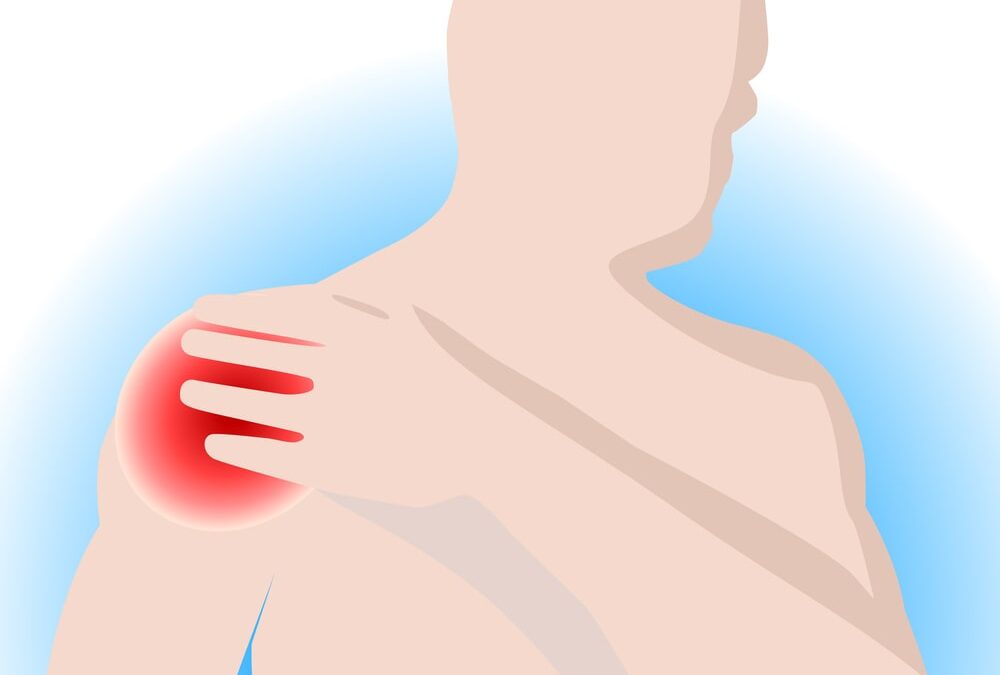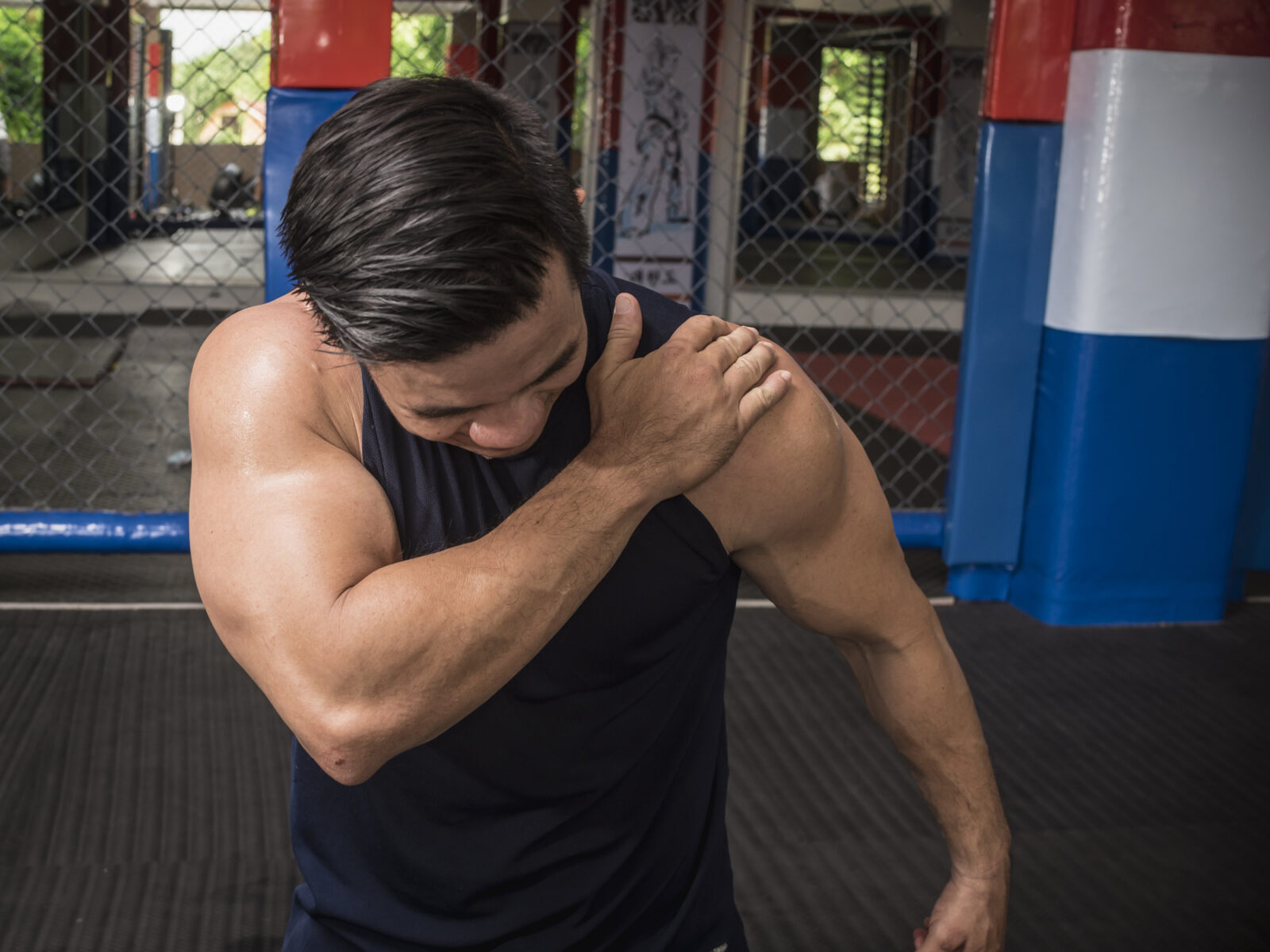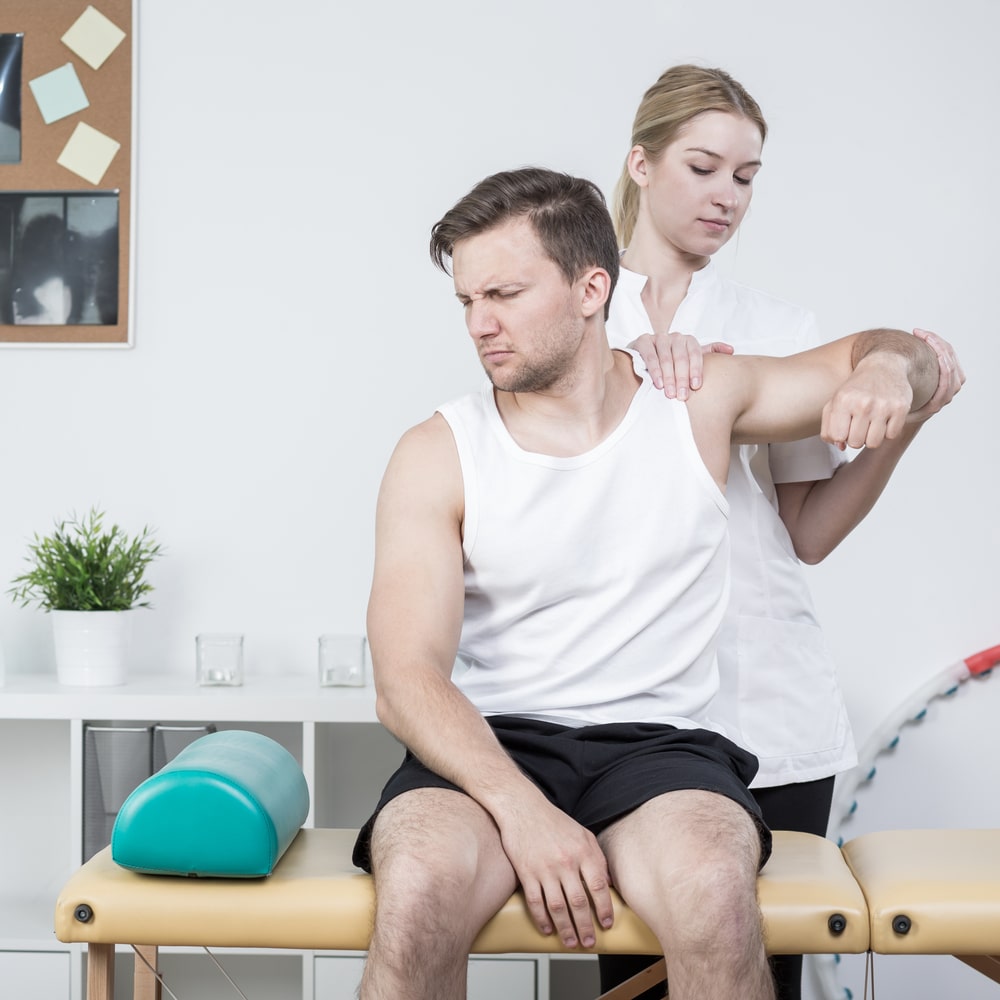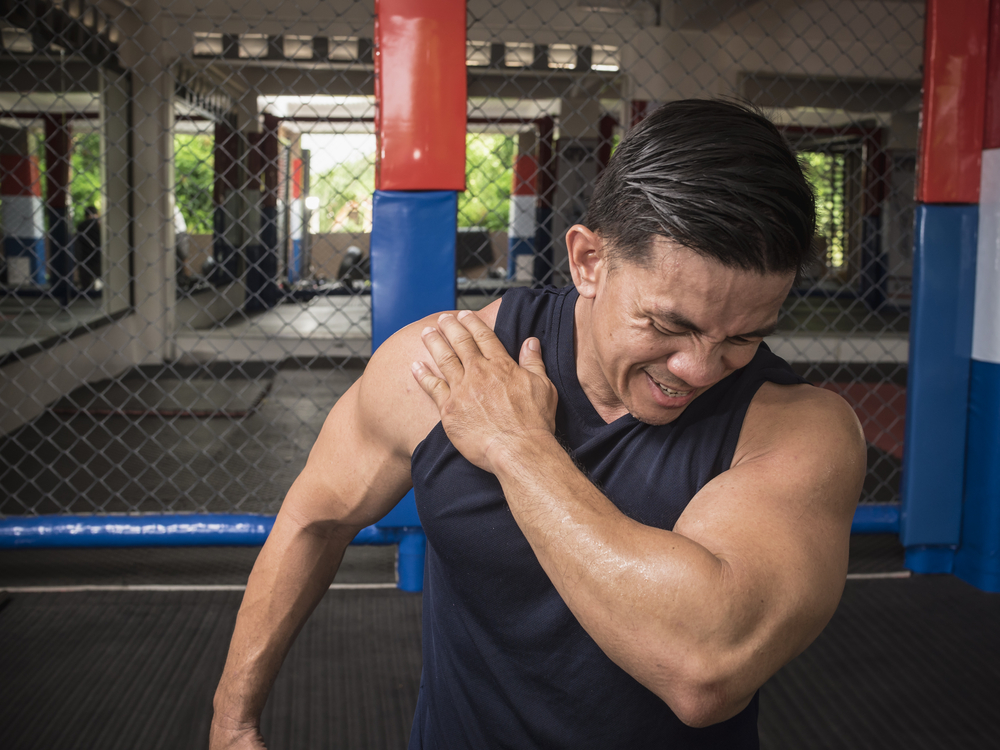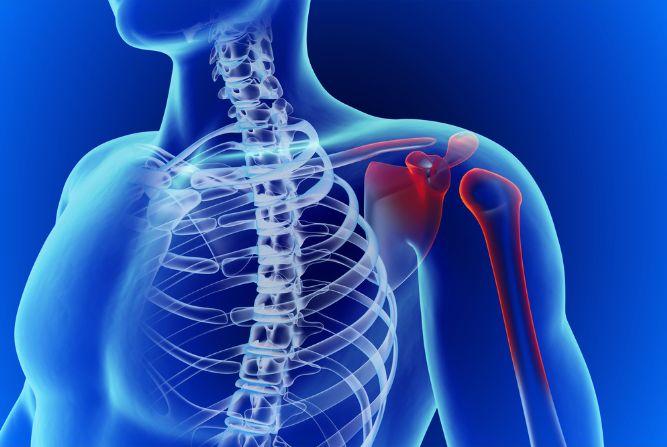Shoulder pain can be a common day-to-day occurrence. We’ve all experienced it at some point. However, if that pain lingers for a long time and affects your life on a day-to-day basis, it may be a sign there’s a bigger problem.
A rotator cuff tear is the most common reason for excessive and excruciating shoulder pain. The best way to determine if your shoulder pain is due to a rotator cuff tear is to see an orthopedic surgeon who specializes in treating the shoulder and who can evaluate and diagnose the underlying cause of your shoulder pain. This is done by taking a detailed history, performing a physical exam, and ordering shoulder X-Rays and, if necessary, a shoulder MRI.
However, not all rotator cuff injuries are the same. In fact, there are two different types of rotator cuff tears: Acute rotator cuff tears and chronic rotator cuff tears.
We’ll explain everything you need to know about rotator cuff tears and how acute and chronic tears differ.
The Rotator Cuff
The shoulder is essentially a ball-and-socket joint, but the socket is very shallow. The best way to think of this joint is a golf ball on a tee, but tipped 90 degrees to the side! The ball is the head of the humerus (the upper arm bone) and it fits into the socket of the shoulder blade called the glenoid. The humeral head (“the golf ball”) is stabilized against the glenoid (“the tee”) by the rotator cuff tendons, which tension the humeral head onto the glenoid and prevent it from sliding off. The rotator cuff tendons are part of a 4-muscle complex that both stabilizes the shoulder joint and generates movement of the arm for elevation, internal rotation, and external rotation. Without the rotator cuff, the humeral head will start to slide off the glenoid and bump into the surrounding structures, often causing pain and difficulty moving the arm into elevation or rotation.
The rotator cuff consists of four muscles that each have an essential role to play:
- Supraspinatus: This muscle holds your humerus in place and helps your arm maintain its stability. It also assists with elevation of your arm. The supraspinatus tendon is the most commonly torn tendon.
- Infraspinatus: The main muscle of the four that facilitates shoulder external rotation.
- Teres Minor: This muscle is the smallest, but it also helps your shoulder with external rotation (rotation of your arm away from your body).
- Subscapularis: This muscle holds your upper arm to your shoulder blade and is the only cuff muscle that is responsible for internal rotation of your shoulder.
All four muscles begin at the shoulder blade and cross the shoulder joint as they combine into a “cuff” of tendons that attach onto the humeral head. Because these muscles all must work in unison, one or more torn muscles can cause extreme discomfort and dysfunction.
What’s a Rotator Cuff Tear?
The rotator cuff tendons of the shoulder are very susceptible to gradual “atraumatic” tears over time from repetitive use, and acute “traumatic” tears that can occur from a sudden violent force imparted onto the shoulder like from a fall or while playing sports. When the rotator cuff is torn, it is often painful, particularly if the tear is traumatic. Rotator cuff tears can also cause biomechanical dysfunction, leading to an inability to elevate the shoulder.
Chronic Rotator Cuff Tears
Chronic tears are often due to degeneration of the rotator cuff tendon tissue over time. Over the years our muscles and tendons can degenerate. People over 40 years old are at higher risk of developing a rotator cuff tear. A chronic, “atraumatic” type of tear is typically the result of wear and tear over time from overuse in an aging rotator cuff. These rotator cuff tears often begin as partial tears, meaning the tendons aren’t completely torn. A partial rotator cuff tear can progress to a full-thickness, or complete tear over time, disconnecting one or more of the affected muscles from its connection to the humeral head. Some of the most common causes of chronic rotator cuff tears occur in folks who have manual labor jobs in which they perform repetitive overhead activities with heavy loads.
Some risk factors for chronic rotator cuff tears include the following:
- Repetitive Motion: Sports like baseball, tennis, rowing, or jobs that require repetitive motion can cause overuse in the shoulder joint and cause a degenerative cuff tear.
- Decreased Blood Supply: As we age, the blood supply within the rotator cuff tendon decreases, making it harder for the body to heal a tear.
- Bone Spurs: Bone overgrowth and spurs on the acromion bone can develop due to age. The spurs can sometimes impinge or rub against the rotator cuff tendons, creating a tear.
Acute Rotator Cuff Tears
Most acute rotator cuff tears happen during a fall or from lifting a heavy object. Many people sustain this type of injury from overstretching their arm or lifting something heavy with a quick-jerk motion. An acute tear can also occur in conjunction with other injuries, such as a broken collarbone or a dislocated or separated shoulder. Acute partial rotator cuff tears have a higher potential to heal than a chronic “atraumatic” partial rotator cuff tears. An acute partial tendon tear can take roughly six to eight weeks to heal if the tear is minor.
Rotator Cuff Tear Symptoms
Some more common symptoms of a rotator cuff tear include:
- Pain in the shoulder while at rest
- Pain that awakens you from sleep
- Pain from lying on the affected shoulder
- Shoulder weakness when lifting or rotating your arm
- A crackling sensation when moving your shoulder
Sudden tears can cause intense pain almost immediately, especially from falling. You may even feel a snap or weakness in your upper arm.
Tears that develop slowly over time can also cause pain and weakness in your arm/shoulder. You may first notice pain when you lift your arm overhead. The longer you live with a slowly developing tear, the more discomfort you’ll feel, specifically while at rest. You’ll notice everyday tasks like combing your hair, brushing your teeth, or reaching for something off a shelf becomes much more difficult.
Your doctor can confirm the diagnosis of a rotator cuff tear by ordering an X-ray and an MRI (magnetic resonance imaging) or an ultrasound.
Treatment
While many rotator cuff treatment options are available, your doctor will determine the best course of action based on your:
- Age
- Activity level
- General health
- Type/degree of tear
Treatment plans often involve sports medicine approaches, focusing on restoring function and preventing further injury.
Nonsurgical
Nonsurgical treatment can relieve pain and improve shoulder function.
Some nonsurgical options include:
- Rest: Rest and limiting activities will allow your muscles and tendons to recuperate.
- Physical Therapy: Specific exercises can be prescribed by a physical therapist to strengthen your shoulder and restore movement. The exercises will mainly consist of stretches that improve shoulder flexibility and range of motion, and resistant band exercises that strengthen the rotator cuff muscles and the scapular stabilizing muscles.
- Steroid Injections: Steroid (cortisone) injections can be temporarily effective at treating persistently inflamed bursitis and/or pain related to a rotator cuff tear, but in the long term, cortisone can have a detrimental effect on the rotator cuff tendon strength and its ability to heal itself or resist further tearing. Caution should be used when considering a cortisone injection.
- Nonsteroidal Anti-Inflammatory Drugs (NSAIDs): Anti-inflammatory drugs, such as aspirin, ibuprofen, and naproxen can help reduce painful symptoms and swelling.
Surgical
A rotator cuff repair surgery through a scope may be necessary if nonsurgical treatment doesn’t help with the pain. Your doctor may consider surgery for your injury if:
- Symptoms have lasted 6 to 12 months or more and have not responded to a course of physical therapy
- The tear is full thickness and retracted
- You’re experiencing significant weakness and loss of function
During rotator cuff surgery, your doctor will reattach the tendon to the bone at the head of your humerus. Physical therapy and other forms of treatment are recommended after surgery to ensure you regain your shoulder motion and strength.
Are you experiencing severe pain from a shoulder injury? An acute rotator cuff tear should be diagnosed and treated as soon as possible. That’s why our doctors at Modern Orthopaedics of Wayne are here for you. Make an appointment with us today to ensure you receive the best treatment possible and get you back to your activities.
